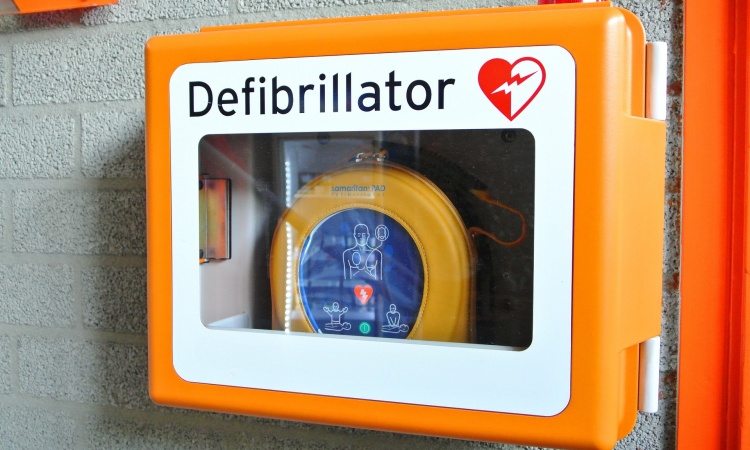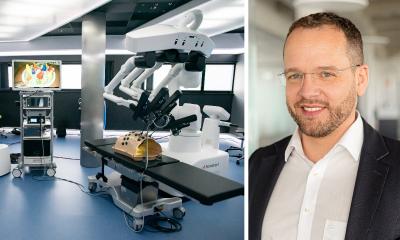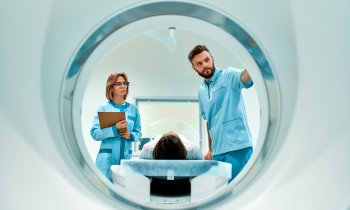Image source: Pexels/Anthony Beck
Article • Medical device regulation revision
MDR: The UK goes it alone
With new Medical Device Regulations (MDR) now in force across Europe, the UK has chosen to retain pre-existing rules while also introducing mechanisms to allow it to draw up separate rulings for the sector in the future. The EU Medical Device Regulation took effect on May 26, aiming to harmonise and strengthen the pre-existing regulatory regime for medical devices, and enhance protection for consumers. But following the end of the Brexit transition period, the UK has taken a different approach to give itself the flexibility to take a divergent position to the EU with respect to medical devices.
Report: Mark Nicholls

Rather than mirror the new EU Medical Device Regulation and upcoming In Vitro Diagnostic Device Regulation in UK law, the UK government passed the Medicines and Medical Devices Act 2021, which came into force in February.
Oliver Mobasser, an Associate in the Healthcare and Life Sciences practice of law firm Latham & Watkins, explained: “The importance of the Act is that it allows flexibility and for new rules to be introduced in the future by way of secondary legislation. This aims to allow flexibility in implementing the government’s stated aim of ‘developing a robust, world-leading regulatory regime for medical devices that prioritises patient safety’. The new act also brings in new enforcement powers and penalties with respect to medical devices, including potential criminal liability for company officers.”
Grace period
At present, these rules only apply to England, Scotland and Wales. In Northern Ireland, the new EU Medical Device Regulation applies and the In Vitro Diagnostic Device Regulation will apply from next May, barring any renegotiation of the Northern Ireland Protocol. Other changes as a result of Brexit include the introduction of mandatory registration requirements for all medical devices placed on the UK market, introducing a new required role of “responsible person” for manufacturers based outside the UK, and replacing the current ‘CE’ mark with a new ‘UKCA’ mark.
Recommended article

Article • Oncology expert debate
Post-Brexit and future cancer research: What EU/UK deals may mean
Despite Brexit uncertainties, four leading UK cancer research experts expressed optimism for continued pan-European collaboration and innovation during the online panel debate ‘Brexit deal: What it really means for cancer research and innovation’ hosted by the National Cancer Research Institute (NCRI).
While the Brexit-related changes applied from January 1, there are some grace periods where some categories of device do not have to be registered immediately with The Medicines and Healthcare products Regulatory Agency (MHRA), depending on the relevant category. In addition, the MHRA will recognise ‘CE’ marks (based on EU legislation) until June 2023, but from July 1, 2023, devices must be certified in accordance with the UK regime and have the new ‘UKCA’ mark. Mr Mobasser said: “It remains to be seen whether the UK will choose in future to align with the new EU regulations or whether it will seek to adopt a less stringent regulatory approach in order to make the UK a more attractive place for life sciences business.”
Safety Commissioner
As the UK develops its post-Brexit regulatory framework, there could be significant regulatory divergences between the UK and EU resulting in increased cost and complexity for businesses seeking to access both markets
Oliver Mobasser
While the new EU Medical Device Regulation was introduced in the wake of high-profile quality and safety issues and seeks to strengthen the regulatory regime in the EU, with a focus on safety, he said it is ‘noteworthy’ that the UK chose not to align with this post-Brexit. However, the Medicines and Medical Devices Act 2021 introduces a new role of Commissioner for Patient Safety, “which is a clear signal that the UK government intends to adopt a patient-centric approach to regulation.”
Yet it still remains to be seen what the new post-Brexit regulatory regime will ultimately look like, but there will likely be a divergence, not only between the UK and EU, but also within the UK with Northern Ireland being bound by the new EU regime. This could have implications where the end customer, such as a hospital or dentist, is in Northern Ireland, and could be considered an EU importer for the purposes of the EU Medical Device Regulation.
Technology and regulation
He added: “Healthcare providers should also bear in mind that it is just not the regulatory landscape, but also the technological landscape and the interplay between technology and regulation, that is changing. For example, with the advent of new tools for healthcare providers to treat patients, such as telehealth, apps and artificial intelligence, healthcare providers should bear in mind that many of these could be classed as medical devices.” This means such tools would need to comply with required safety and quality standards and may need to be ‘CE’ or ‘UKCA’ marked to prove compliance.
As a result, manufacturers will need to keep track of the evolving and fast-changing regulatory landscape, both in the EU and the UK. “As the UK develops its post-Brexit regulatory framework, there could be significant regulatory divergences between the UK and EU resulting in increased cost and complexity for businesses seeking to access both markets,” added Mr Mobasser.
Profile:
Oliver Mobasser is an Associate in the Healthcare and Life Sciences practice of Latham & Watkins, specialising in advising multinational pharmaceutical, biotechnology and medical technology companies and their investors on complex licenses, collaborations, acquisitions, divestments, commercial contracts, intellectual property matters and regulatory and privacy matters.
21.06.2021











